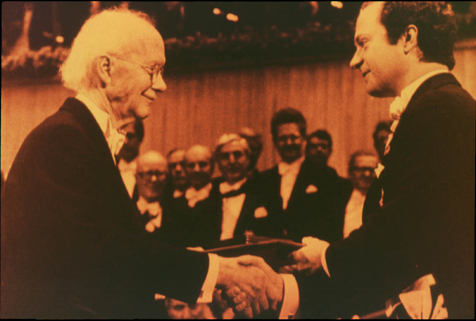
Faculty Research 1980 - 1989
Hemoglobin switching in sheep: characteristics of BFU-E-derived colonies from fetal liver.
Document Type
Article
Publication Date
1980
Keywords
Cell-Differentiation, Colony-Forming-Units-Assay, Fetal-Hemoglobin: bi, Fetus: me, Hematopoietic-Stem-Cells: cy, me, Hemoglobin-C: bi, Liver: em, cy, me, Sheep: me, Time-Factors
First Page
495
Last Page
500
JAX Source
Blood. 1980 Sep; 56(3):495-500.
Abstract
Two types of erythroid colonies were generated in vitro from sheep fetal liver cells. The first type consisted of single colonies of 8-256 cells that were well hemoglobinized by 4 days; these are thought to originate from CFU-E. The second type consisted of macroscopic colonies composed of several subcolonies that matured between days 3 and 8 in vitro. At maturity, each contained 256 to > 1000 cells that formed a discrete macroscopic cluster. The macroscopic colonies, not previously described in sheep, are thought to be derived from BFU-E. The characteristics of sheep BFU-E were defined and the production of fetal hemoglobin (HbF, alpha 1, gamma 2) and HbC (alpha 2 beta 2) was compared in colonies derived from CFU-E or BFU-E. Bursts developed at erythropoietin (epo) concentrations as low as 0.1 U/ml, although the number observed increased with epo concentration up to 10 U/ml. The number of bursts observed was approximately proportional to the number of cells plated. As shown by thymidine suicide, approximately 50% of both the BFU e and CFU-E were in S-phase when obtained from the fetus. BFU-E were smaller and partially separable from CFU-E after sedimentation at unit gravity. The beta c/gamma synthetic ratio in colonies derived from BFU-E was greater than in CFU-E-derived colonies. These data suggest that the capacity for generation of erythroblasts making HbC is greater in the earlier or more primitive erythroid stem cells in fetal liver.
Recommended Citation
Barker JE.
Hemoglobin switching in sheep: characteristics of BFU-E-derived colonies from fetal liver. Blood. 1980 Sep; 56(3):495-500.

